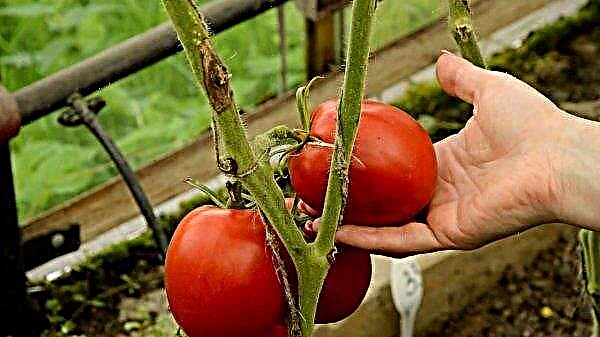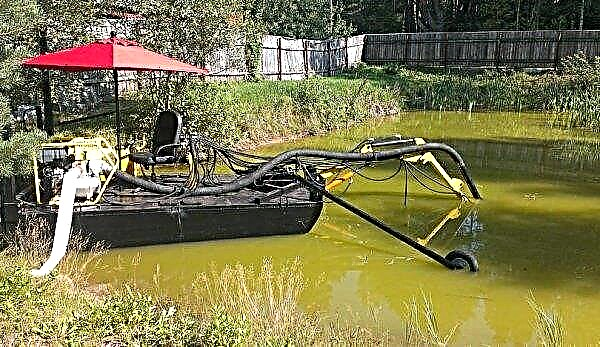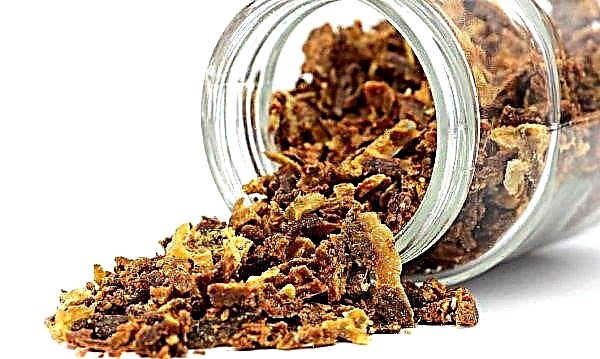Orchid, or phalaenopsis is one of the most popular house plants. She adorns the windowsills of both professional florists and ordinary amateurs. And many want not only to keep this delicate flower until the next season, but also to successfully propagate it. This article lists the main stages of orchid propagation: preparatory work, methods of reproduction and rules for caring for plants.
General rules for growing orchids
In order to proceed with the propagation of orchids, it must be sustained on the windowsill of at least one growing season. During this time, the young plant will not only adapt to new living conditions, but will also be able to give similar specimens. For this, the flower must create optimal conditions and maintain the desired microclimate.
The basic rules for growing indoor orchids:
- The plant needs to provide good illumination. In this case, the light should be moderate and diffused.
- The optimum temperature for growing this species is +20 ... + 25 ° С in summer and not lower than +15 ... + 18 ° С in winter.
- It is forbidden to plant these flowers deep in the soil - they should develop on the border of soil and air.
- The soil for orchids should be as porous as possible, with a low coefficient of water absorption, otherwise the root system of the flower will be susceptible to root rot.
- Watering flowerpots with the plant should be moderate, avoiding the saturation of the substrate.
- High humidity is one of the main rules for successful orchid cultivation. The foliage must be moisturized regularly: once a day in the winter and at least 2 times a day in the summer.
- Orchid does not like transplants, so this procedure should be resorted to as little as possible.
- Phalaenopsis should be fed regularly (1-2 times a month). To do this, use specialized or universal mineral fertilizers for home flowers (concentration - 10 times less than what the manufacturer recommends).
Did you know? The well-known seasoning vanilla is obtained from the fruit of an orchid called vanilla flat-leaved (Vanilla planifolia). Fermented long brown pods contain a fragrant secret that is widely used in cooking.
Optimal conditions and terms and breeding
The most favorable period for the propagation of orchids is the first half of March - early April. At this time, after the winter dormant phase, the plant metabolism is activated, respectively, the ability of the flower to reproduce, as well as to the subsequent development of young plants, is increased. However, for this phalaenopsis requires appropriate conditions of detention. To comply with the optimal regime of plant maintenance, you need:
To comply with the optimal regime of plant maintenance, you need:
- to provide a constant temperature within +20 ... + 25 ° С;
- shade foliage, since the spring sun can cause a sunburn, which will lead to inhibition of the plant;
- spray foliage at least 2 times a day (morning and evening);
- Be sure to feed the flower with nitrogen fertilizers.
Important! In early spring, the orchid must be treated against pests and fungi. Their development on a flower depresses growth, and with it the reproductive ability of the plant.
Preparatory work
It is necessary to prepare for the propagation of orchids 1–2 weeks before the onset of a full thaw. First you need to prepare the substrate. For the propagation of orchids, natural soil mixtures are used, prepared from equal parts of dried sphagnum moss, coke fiber and pine bark.
Sometimes such a mixture is enriched with crushed charcoal - it plays the role of an antiseptic, and also in the future becomes a source of trace elements. Ready-made substrates are sold in flower shops, but it’s better to cook them yourself - this is the way to maximize the rooting rate of sprouts.
Before propagation of phalaenopsis, the soil must be sterilized. To do this, all components should be boiled in clean water for 30 minutes, or moistened well with a 1% solution of copper sulfate. This is necessary in order to destroy pests and all kinds of infections, to which young sprouts do not yet have immunity. After processing, the substrate must be dried naturally, and then carefully crushed into pieces of 2-4 cm.
The next step is to select a pot. Such a container can be made of any materials (ceramics, clay, plastic), she is sure to must comply with the following requirements:
- have a functional drainage hole;
- differ in high thermal insulation properties;
- contribute to the establishment of a protective dome around it.

Before propagation, the container, like the substrate, must also be sterilized. To do this, they need to be wiped with a 1% solution of potassium permanganate or a 70% alcohol solution, and then washed under running water. In addition, immediately before planting with these solutions, it is imperative to process various auxiliary tools, especially if they have already been used to care for any plant.
Important! For propagating orchids, a transparent container is considered the most suitable. It makes it possible to control the development of the sprout, as well as the state of the root system.
How to propagate an orchid at home: the main ways
Most often, phalaenopsis is propagated vegetatively. To do this, reproductive active parts (halves of the bush, leaf and stem cuttings, children) are separated from the plant, which are then rooted. Propagation of orchids by seeds occurs infrequently - they are characterized by low germination, as well as demanding microclimate.
Dividing the bush
Propagation of an orchid by dividing the bush is carried out in exceptional cases - this method is quite traumatic and causes excessive stress for a tender orchid. As a rule, they resort to this method to rejuvenate the bush, or if it is affected by various infections, as well as when cleaning the plant from wilted or decayed parts. In addition, this method requires at least 1-2 years of recovery, during which phalaenopsis needs painstaking care.
The main stages of the division of the bush:
- Remove the bottom of the leaves so that only the top remains on the orchid.
- Provide the plant with constant hydration, warmth and moderate light.
- After a few weeks, young roots will appear on the bare stalk, after which the top must be cut off and planted in a separate temporary container. To avoid damage by fungus, be sure to treat the slice with crushed charcoal. To accelerate rooting every 14 days, fertilize the orchid with Bona Forte, Fertika Lux or analogues (foliar top dressing).
- When a complete root system is formed, peel the flower from dried and old leaves, and then dive into a permanent pot.
Video: orchid propagation by dividing the bush
Kids
Children are called daughter side branches of orchids (part of the stem along with leaves and roots), which, when separated, are capable of producing a full-fledged young plant. They develop from the buds at the top or above the middle of the stem, in early spring. In most cases, babies appear only under adverse factors, but today many varieties of flower have been bred that can produce 1-2 babies per season without any negative effect.
To root a baby, you need:
- Separate the process from the uterine plant by the level of the stem. The slice must be processed with crushed coal.
- Plant the sprout in a small container with a substrate.
- Move it to a warm, well-lit place, provide constant moderate watering.
- After a few weeks, the baby will completely take root, after which it can be transplanted into a permanent pot.

Stimulation using cytokinin paste should be carried out as follows:
- Select a full, adult kidney on the plant.
- With a thin knife or tweezers, carefully remove the upper scales of the kidney. The lower part must remain intact, otherwise the kidney will become incapacitated.
- Take a toothpick and apply a paste on the kidney with a layer of 1-2 mm, and then leave the flowerpot alone.
- In a few weeks, a side branch will appear on the orchid, from which a young baby will soon grow.
- In the phase of 2-3 leaflets, the baby can be separated from the uterine plant. At the same time, at least 2 full-fledged roots must necessarily form on it.
Important! It is forbidden to propagate an orchid immediately after purchase, during the flowering period, and also if it is affected by fungi or parasites.
Cuttings
This is one of the most difficult ways to breed Phalaenopsis. Cuttings not only take root for a long time, but also require special conditions for germination. Today, there are many ways to cut orchids, but the simplest and most effective of them is the germination of stem cuttings.
The procedure is as follows:
- Cut from the lateral shoots stalk cuttings 10-15 cm long. They must necessarily contain at least 1-2 viable buds.
- Place the cuttings in a large transparent plastic tray (with a sealed lid) on a well-moistened substrate. The distance between the cuttings should be at least 3-4 cm.
- Make a small hole in the lid and close the tray with it.
- Place the container with the cuttings in a warm, well-lit place.
- After a few weeks, roots and leaves will appear on the cuttings. After that, in the phase of 2-3 leaves, remove the shoots from the tray and transplant into separate pots. In this case, the unnecessary parts of the cuttings must be cut off.
- Once the plant has taken root, dive it into a permanent pot.
Video: propagation of orchids by cuttings
Is it possible to propagate by seed
In the natural environment, seed propagation is one of the most common ways to conserve orchid populations. However, at home, growing a flower from seeds is almost impossible: orchid seeds do not have their own previously stored nutrients, so in nature they enter into symbiosis with a variety of mushrooms.
For the germination of seeds in artificial conditions, special nutrient media are used, but for their preparation and compliance with the seedling regime, it is necessary to have expensive equipment. In addition, for a full adult flower to be obtained from the seeds of the phalaenopsis, it will take at least 4–5 years. Therefore, this species is propagated by seeds only in laboratory conditions, to obtain new hybrids or rejuvenate existing species.
Aftercare
After the young orchid has taken root, it is necessary to create the optimal microclimate for its maintenance. The flower should be placed in a warm (+20 ... + 25 ° С) place with bright but shaded lighting. It is also important to create the necessary water regime for the flower. The substrate must be watered daily, but in small portions, avoiding its overmoistening or drying out. 1-2 times a day, the flower needs to be moistened with foliage - this will best help to activate its growth.
After about a month, young phalaenopsis needs to be fed. Complex fertilizers for orchids, or any fertilizing for ornamental plants (concentration should be 10 times less than specified by the manufacturer) are suitable for this. At the same time, if possible, the flower should be preventively treated against diseases and pests with the help of the preparations “Ritomil”, “Fitosporin” or “Fundazol”.
Did you know? Orchid is one of the most numerous plants on the planet. Today, botanists know about 35 thousand wild-growing and 150 thousand decorative varieties of this flower.
What problems can arise?
Orchid is one of the most fastidious plants, therefore, quite often its reproduction takes place with all sorts of difficulties. It is necessary to constantly monitor all stages of flower propagation, as inattention can become the main cause of death of a young sprout.
The main problems with the propagation of orchids and methods for solving them:
| Problem | The main reason | Solutions |
| Yellowing leaflets on sprouts | Low nutritional value of the substrate | The plant needs to be fed |
| The flower stalk has turned yellow or dried, and the children have not yet taken root. | Maternal Flower Nutrition Problems | Cut the baby and place it on moistened moss. Before the roots appear, spray it abundantly |
| After transplantation of the apical cuttings, the roots dried on the plant | The cut was sloppy or excessively high. | Transplant the top onto moistened moss. Spray it abundantly on such a substrate, up to rooting |
| Cuttings do not root | Lack of heat and humidity | Move the container with the cuttings to a warmer and more illuminated place, or additionally illuminate with a table lamp |
Propagation of orchids is a rather complicated process that requires special attention and persistence from the grower. To do this, not only need to study the entire technology of the procedure, but also be able to create a favorable microclimate for the shoots. If you adhere to the recommendations described above, propagation of the orchid will become a simple and productive lesson.












